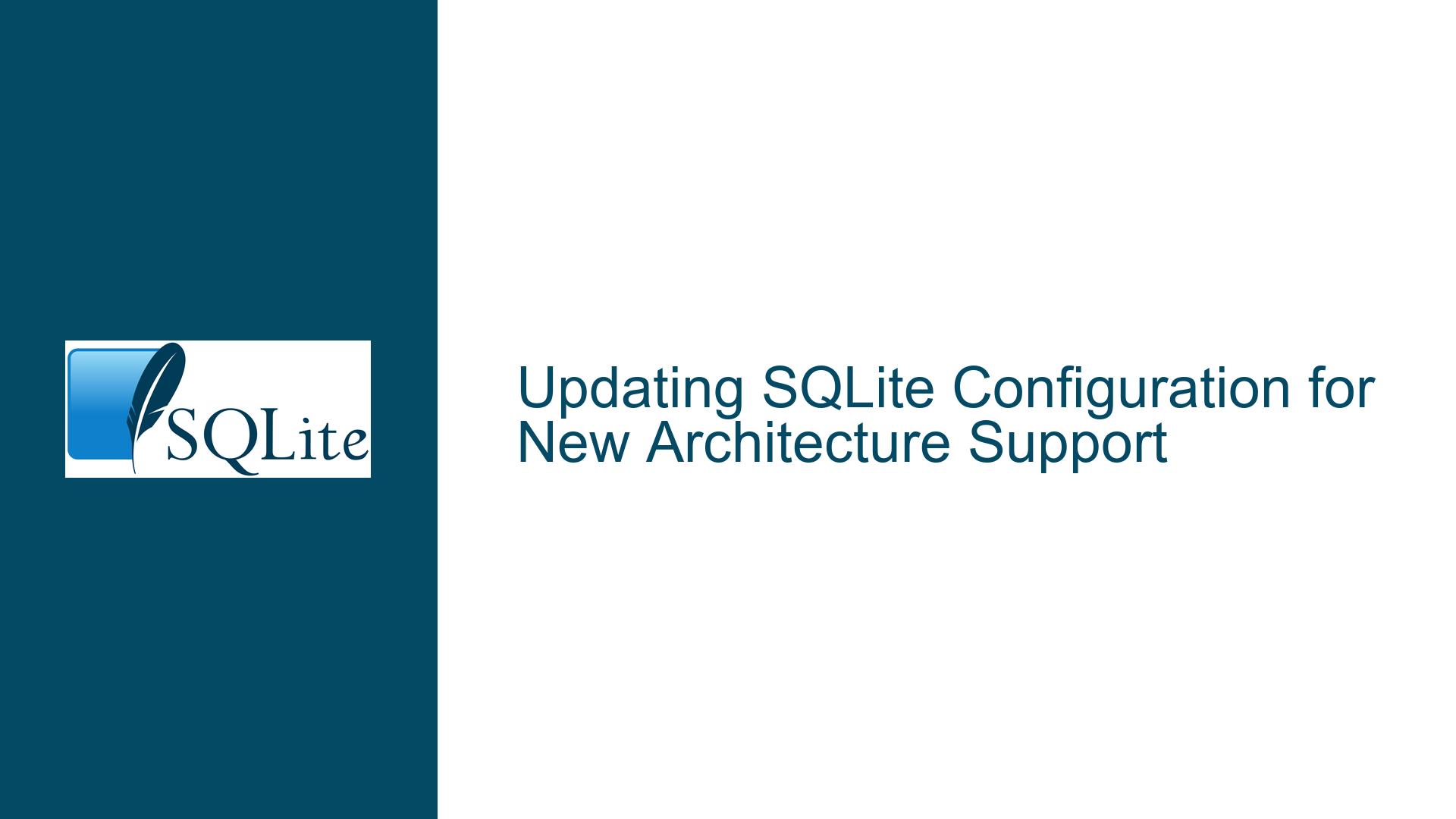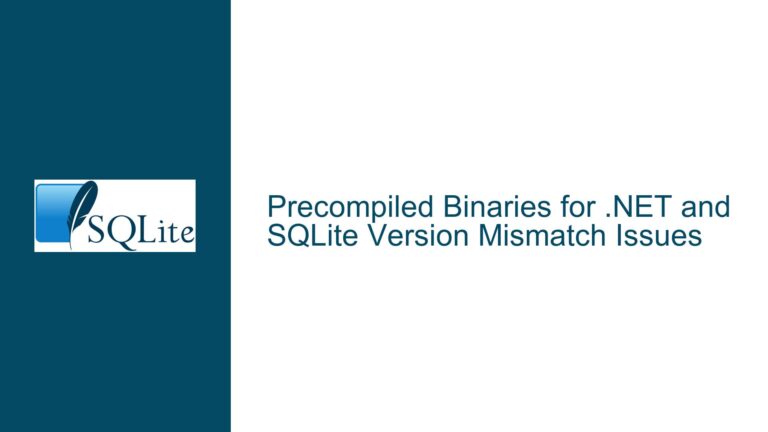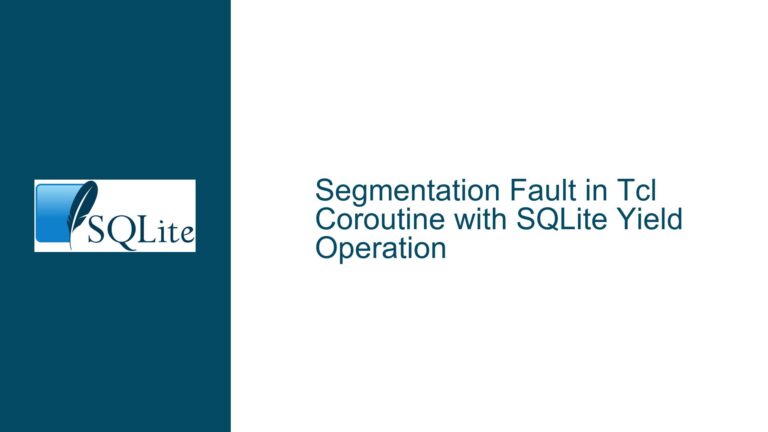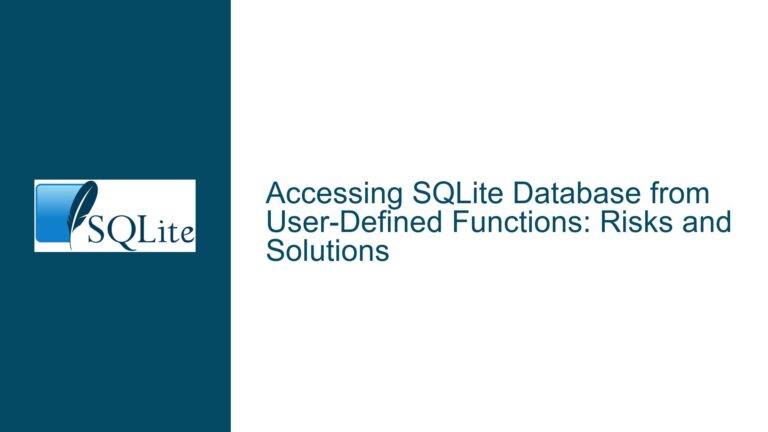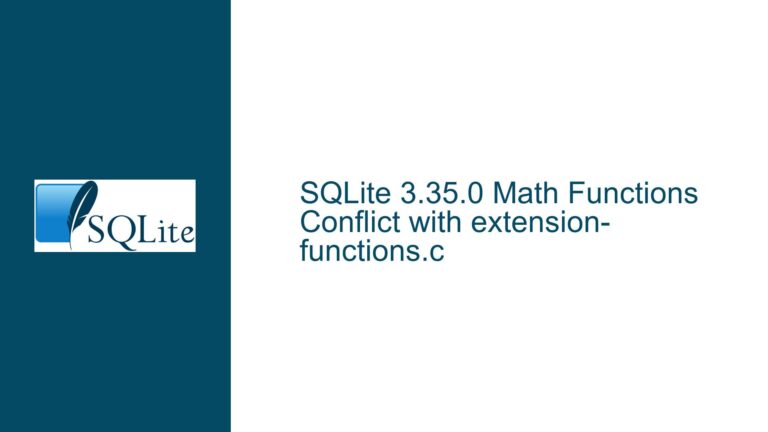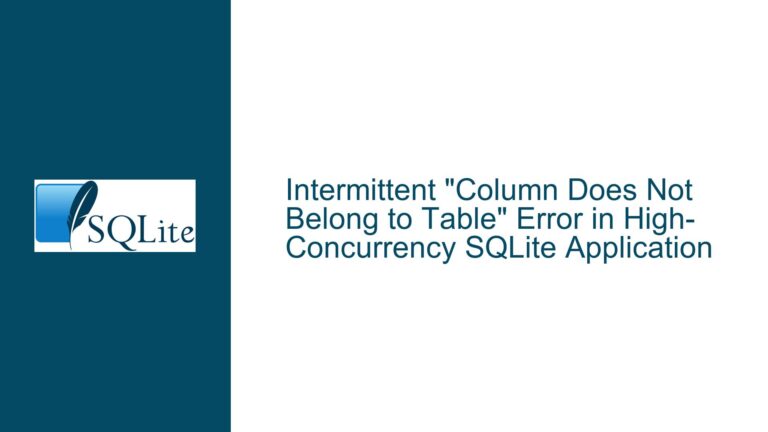Updating SQLite Configuration for New Architecture Support
Understanding the Need for Configuration Updates in SQLite
The core issue revolves around the necessity of updating the SQLite configuration to accommodate new architecture support introduced by recent updates to gnu-config. SQLite, being a lightweight and widely-used database engine, relies on its configuration settings to ensure compatibility and optimal performance across various hardware architectures. The configuration files, often named config.sub and config.guess, play a critical role in this process. These files are responsible for identifying the system architecture and configuring SQLite accordingly. When these files are outdated, SQLite may fail to recognize new architectures, leading to compatibility issues, suboptimal performance, or even complete failure to compile or run on newer systems.
The config.sub and config.guess files are part of the GNU Autotools suite, which is used to automate the configuration of software packages. These files contain information about various system architectures, including their names, aliases, and characteristics. When a new architecture is introduced, these files need to be updated to include the new architecture’s details. Without such updates, the configuration process may not recognize the new architecture, leading to errors during the build process or runtime.
The discussion highlights that it has been four years since the last update to these configuration files. Over this period, new architectures have been introduced, and the existing configuration files may no longer be sufficient to support them. This lag in updates can be attributed to several factors, including the complexity of maintaining these files, the need for thorough testing across different architectures, and the potential for introducing new bugs or compatibility issues. However, the importance of keeping these files up-to-date cannot be overstated, as they are critical for ensuring that SQLite remains compatible with the latest hardware and software environments.
Identifying the Root Causes of Configuration Update Issues
The primary cause of the issue is the outdated state of the config.sub and config.guess files. These files are essential for the proper functioning of the GNU Autotools, which are used to configure SQLite for different architectures. When these files are not updated, they may lack the necessary information to recognize and configure SQLite for new architectures. This can lead to a variety of problems, including compilation errors, runtime errors, and performance issues.
One of the main reasons for the outdated configuration files is the complexity involved in maintaining them. The config.sub and config.guess files contain a vast amount of information about different architectures, including their names, aliases, and characteristics. Updating these files requires a deep understanding of the architectures being added, as well as the ability to test the changes across different environments. This process can be time-consuming and error-prone, especially when dealing with new or less common architectures.
Another factor contributing to the issue is the potential for introducing new bugs or compatibility issues when updating the configuration files. Even a small error in these files can have significant consequences, as they are used during the critical configuration phase of the build process. As a result, developers may be hesitant to update these files unless absolutely necessary, leading to a lag in updates.
Additionally, the lack of a standardized process for updating these files can also contribute to the issue. In some cases, the responsibility for updating the configuration files may fall on the shoulders of individual developers or maintainers, who may not have the necessary resources or expertise to do so effectively. This can result in delays in updating the files, even when new architectures are introduced.
Comprehensive Steps to Update and Troubleshoot SQLite Configuration
To address the issue of outdated configuration files, it is essential to follow a systematic approach that includes updating the files, testing the changes, and troubleshooting any issues that arise. The following steps provide a detailed guide on how to update the config.sub and config.guess files and ensure that SQLite is properly configured for new architectures.
Step 1: Obtain the Latest Version of config.sub and config.guess
The first step in updating the configuration files is to obtain the latest versions of config.sub and config.guess. These files are part of the GNU Autotools suite and can be obtained from the GNU website or from the source code repository of a project that uses the latest version of the Autotools. It is important to ensure that the files are obtained from a reliable source, as they will be used to configure SQLite for different architectures.
Step 2: Replace the Outdated Files with the Latest Versions
Once the latest versions of config.sub and config.guess have been obtained, the next step is to replace the outdated files in the SQLite source code directory with the new versions. This can be done by copying the new files into the appropriate directory, typically located in the config or build-aux subdirectory of the SQLite source code. It is important to ensure that the new files are placed in the correct directory, as the build process will look for these files in specific locations.
Step 3: Run the Configuration Script
After replacing the outdated configuration files, the next step is to run the configuration script to generate the necessary build files. This can be done by executing the configure script, which is typically located in the root directory of the SQLite source code. The configure script will use the updated config.sub and config.guess files to identify the system architecture and generate the appropriate build files.
Step 4: Test the Configuration
Once the configuration script has been run, it is important to test the configuration to ensure that SQLite is properly configured for the new architecture. This can be done by compiling SQLite and running a series of tests to verify that it functions correctly on the target architecture. It is also important to test the configuration on different systems to ensure that it is compatible with a wide range of architectures.
Step 5: Troubleshoot Any Issues
If any issues arise during the configuration or testing process, it is important to troubleshoot them systematically. This may involve reviewing the configuration files for errors, checking the build logs for any warnings or errors, and consulting the documentation for the GNU Autotools and SQLite. In some cases, it may be necessary to modify the configuration files or the build process to resolve the issues.
Step 6: Commit the Changes
Once the configuration has been successfully updated and tested, the final step is to commit the changes to the SQLite source code repository. This will ensure that the updated configuration files are available to other developers and users, and that SQLite remains compatible with the latest architectures.
Additional Considerations
In addition to the steps outlined above, there are several additional considerations that should be taken into account when updating the configuration files. These include:
Backward Compatibility: It is important to ensure that the updated configuration files are backward compatible with older architectures. This can be done by testing the configuration on a variety of systems, including those with older architectures.
Documentation: It is important to document the changes made to the configuration files, including the reasons for the changes and any potential issues that may arise. This will help other developers understand the changes and troubleshoot any issues that may arise in the future.
Automation: To streamline the process of updating the configuration files, it may be beneficial to automate the process using scripts or tools. This can help reduce the risk of errors and ensure that the files are updated in a consistent manner.
Community Involvement: In some cases, it may be beneficial to involve the broader SQLite community in the process of updating the configuration files. This can help ensure that the changes are thoroughly tested and that any potential issues are identified and resolved quickly.
By following these steps and considerations, developers can ensure that the SQLite configuration files are kept up-to-date and that SQLite remains compatible with the latest architectures. This will help ensure that SQLite continues to function optimally on a wide range of systems and that users can take advantage of the latest hardware and software advancements.
